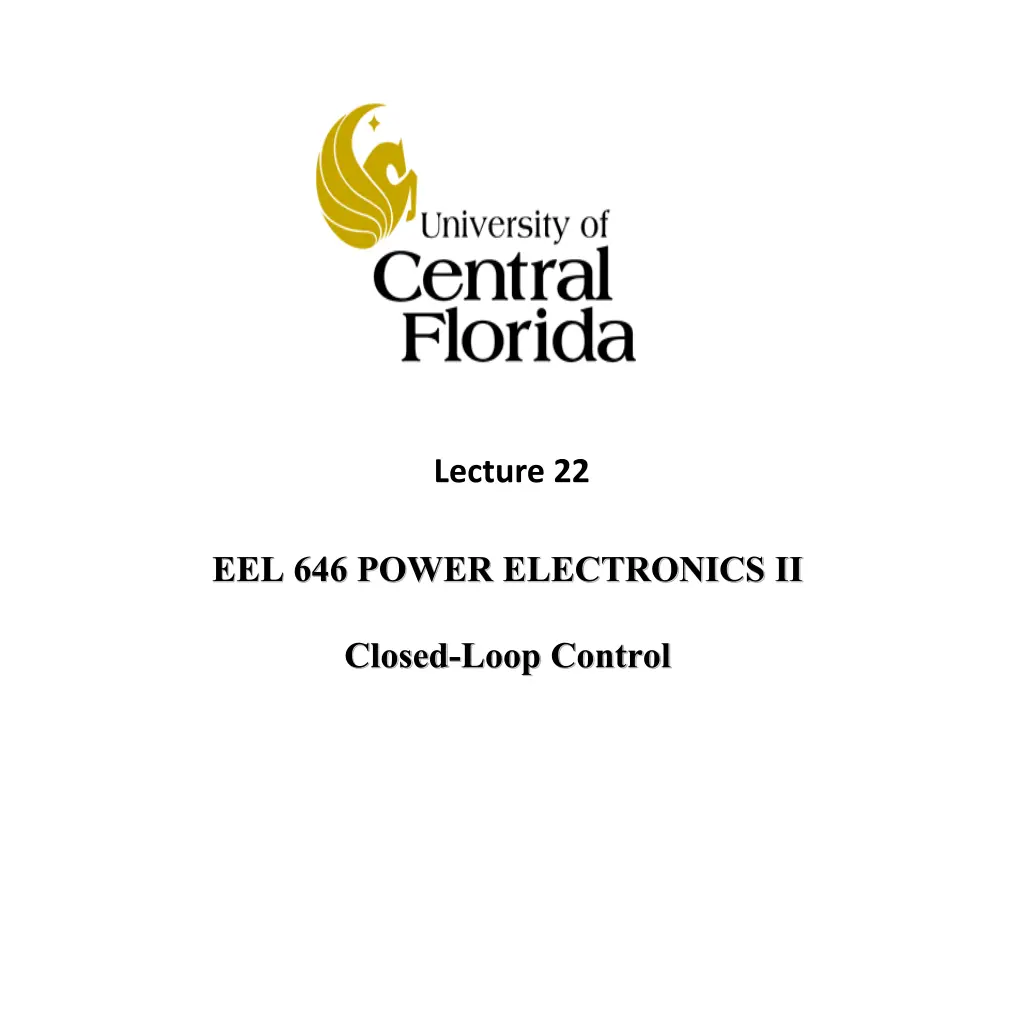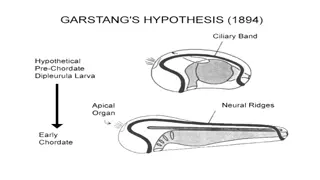
Closed-Loop Control in Power Electronics II: Exam, Projects, Presentations
Get ready for the final exam in EEL 646 Power Electronics II with details on project presentations, exam topics, and closed-loop DC-DC converter modeling. Don't miss the important dates and agenda to excel in your studies.
Download Presentation

Please find below an Image/Link to download the presentation.
The content on the website is provided AS IS for your information and personal use only. It may not be sold, licensed, or shared on other websites without obtaining consent from the author. If you encounter any issues during the download, it is possible that the publisher has removed the file from their server.
You are allowed to download the files provided on this website for personal or commercial use, subject to the condition that they are used lawfully. All files are the property of their respective owners.
The content on the website is provided AS IS for your information and personal use only. It may not be sold, licensed, or shared on other websites without obtaining consent from the author.
E N D
Presentation Transcript
Lecture 22 EEL 646 POWER ELECTRONICS II Closed-Loop Control
Reminder Final Exam During the Final Exam Week: Take home exam Thursday April 29 Sunday May 2rd midnight Projects final reports due on Midnight Thursday April 29. Project Presentations: Monday (April 19): 7 presentations (7-10 minutes each) Wed (April 21): 7 presentations (7-10 minutes each)
Project Presenters: Monday (April 19): Sahin, Mohammad, Reza, Mathew Lucente, Andrew Siwarski, Justin Phelps Wed (April 21): Russ, Robert, Sumana, Safayat, Joshua Cates, Ganesh Marasini, Carlos Granda, Mohammadali, Ben Heintze, Luke Minks
Agenda Final Exam Topics: Ch 6 (ZVS, ZCS) , SRC, PRC, LLC, small Signal modeling
Closed-Loop DC-DC Converter H(s) 5 Based on the textbook by Robert Erickson
Objective of ac converter modeling Predict how low-frequency variations in duty cycle induce low- frequency variations in the converter voltages and currents. Ignore the switching ripple Ignore complicated switching harmonics and sidebands The approach is to Remove switching harmonics by averaging all waveforms over one switching period 7
Example of neglecting Switching Ripples 8 Based on the textbook by Robert Erickson
Output voltage spectrum with sinusoidal modulation of duty cycle 9 Based on the textbook by Robert Erickson
Example Outlining Basics of Averaging and Linearization (Manual Circuit Averaging and Linearization) V V o = iL m in = m L L iD + vout V DT in vin iL peak= i L C R L _ iD DTs Ts i peak Fig. (1.) Buck-Boost Converter DTs Ts From the iD plot we can see the average current is given by: Fig. (2.) Inductor and Diode Current in DCM 2 2 V T D in 2 = i D AVG L V o A resulting averaged circuit can be drawn as: + V _ D i AVG C R OUT AVG *Note- In the general case, both D and Vin vary with time and we can see the nonlinear dependence on the circuit parameters. Fig. (3.) Output Portion of Averaged Circuit
Example Outlining Basics of Averaging and Linearization (Manual Circuit Averaging and Linearization) To linearize, we first solve for the DC operating point as: 2 in 2 V T D R T = = = V R I R V V D o D o in Avg 2 L V 2 L o Next, we introduce AC perturbations and neglect second and higher order terms: ~ 2 + D 2 d D 2 in 2 in 2 ~ ~ V T V T D ~ ~ + = + + = + I I V I v V d D d i d i d d o d o o L L 2 ~ + 2 V v o o Separating the AC and DC quantities in the equation, we have: For DC terms: For AC terms: 2 in 2 2 in V T ~ ~ D V T i~ = I + = I v V d D d d d o o L 2 V L o Substituting the DC expression for Id into the AC expression and solving for we obtain: ~ d 2 in 2 ~ V T D D i~ = v d o 2 L V 2 V o o
Example Outlining Basics of Averaging and Linearization (Manual Circuit Averaging and Linearization) Substituting in the DC operation point (expression for Vo) into the expression for we obtain: ~ ~ d 1 2 T ~ = + v V D i d o in R R L The resulting linearized, averaged circuit is: ~ d i + ~ v ~ d 2 T V D C R R in o R L Fig. (4.) Linearized, Averaged Circuit for DCM *Note- The linearization process introduces an additional resistance, also note LTI elements map to themselves in the model but nonlinear elements are replaced by controlled sources and dampening resistances.
Example Outlining Basics of Averaging and Linearization (Manual Circuit Averaging and Linearization) Another key point here is that the same result can be obtained by the following expression: ~ d 2 in 2 ~ ~ d ~ V T f f D D ~ + = v v d i o o _ o _ 2 L V 2 V o o v d 2 in 2 _ D V T D = = = f i ) t ( i where D AVG _ ) t ( 2 L v o *Note- Therefore Both approaches are an expression of Taylor Series expansion up to the linear terms. Key Issue




















